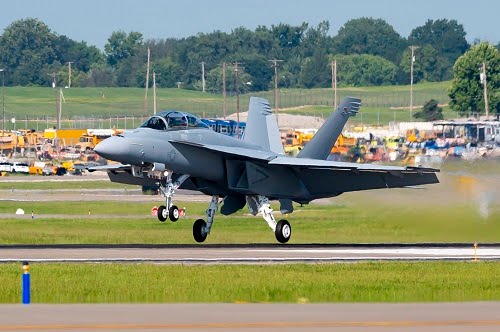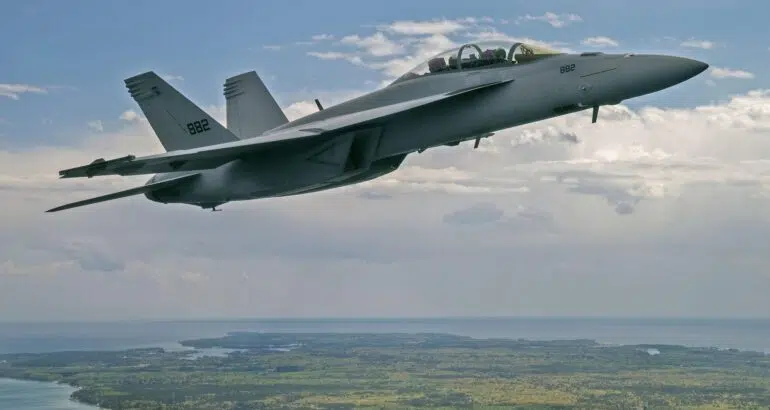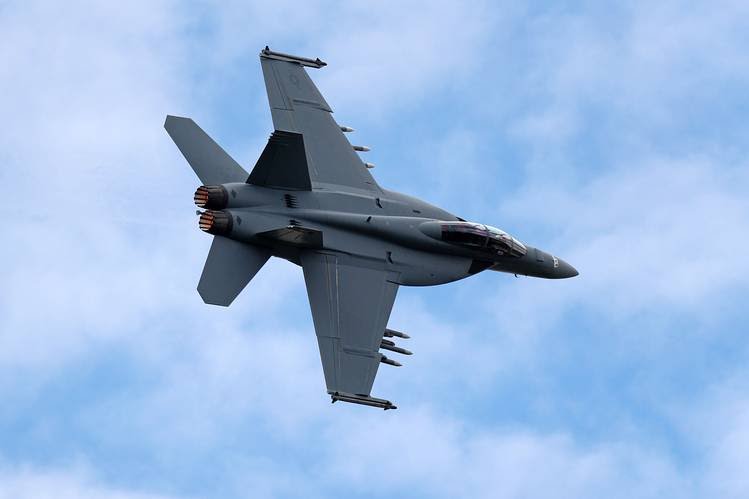Boeing and the United States Navy have completed a series of MUM-T flight tests in which a Block III F/A-18 Super Hornet successfully demonstrated command and control of three unmanned aerial vehicles (UAVs).

To collaborate with the UAVs, Boeing system engineers linked Block III’s auxiliary processor, known as the Distributed Targeting Processor – Networked (DTP-N), with a third-party tablet. Boeing created new software loads for the DTP-N that are specifically designed for running the third-party tablet and transmitting commands. In less than six months, the software development, tablet connection to the fighter, and all flying testing were completed.
“Block III Super Hornet is executing on its assurance of hardware – installed now – that is ready to receive the software of the future.”
Ben LeGrand, director of mission systems at Boeing, saidAdvertisement
Block III Super Hornet will incorporate hardware and software from third parties with little change.
The Naval Air Warfare Center-Weapons Division at China Lake, California, the F/A-18 & EA-18G Program Office (PMA-265), Air Test and Evaluation Squadrons (VX) 23 and 31, and a third-party vendor collaborated with Boeing on the demonstration. Pilots of the F/A-18 entered commands into the tablet during the test flights, which the hardware of Block III then processed and communicated. Throughout tests conducted over a two-week period, the UAVs carried out every order issued by the F/A-18 pilots.
“The Navy’s goal of Distributed Maritime Operations is well on its way to realisation with this successful MUM-T demonstration. The Navy’s reach might be increased and extended thanks to unmanned technologies, according to Scott Dickson, director of multi-domain integration at Boeing. Teams of UAV undertaking ISR missions, lead by the most recent Super Hornets outfitted with network-enabled data fusion and enhanced capabilities, would give warfighters throughout the Joint Force a considerable information edge if they were part of a Joint All-Domain Command and Control network”
The F/A-18 is a leader in the development and installation of the hardware and processing capacity required for future digital capabilities and expansion since it has the largest digital touch panel in any fighter cockpit. The presentation is being run on an auxiliary processor, which significantly boosts the F/A-18’s mission processing suite.

According to Mark Sears, Boeing vice president and programme manager of the F/A-18 and EA-18G programmes, “future fighter pilots will be the quarterback of the sky, coordinating directives and managing UAVs from the integrated Block III touch-screen cockpit.” The Block III Super Hornet is a risk-reducer for the Navy and a bridge to the future that is already delivering on teaming, networking, and interoperability.
Also Read:
Indian Government Receives More Than 100 bids for UDAN 4.2 Scheme
Air Arabia flight reports hydraulic issue but lands safely in Kochi
Join our telegram group for latest Aviation Updates:-
Stay tuned…

